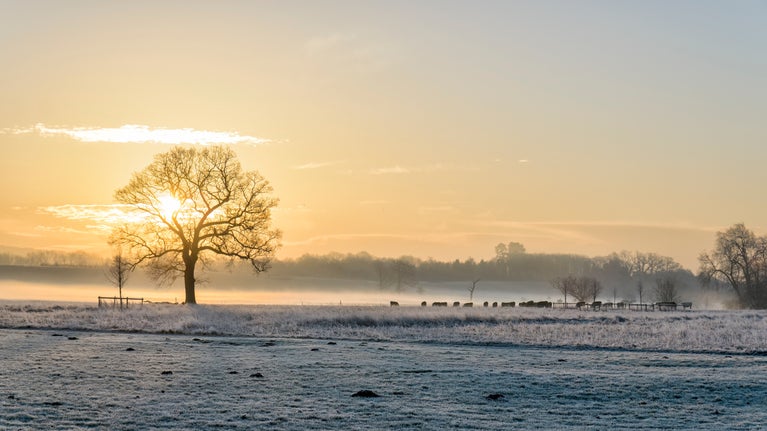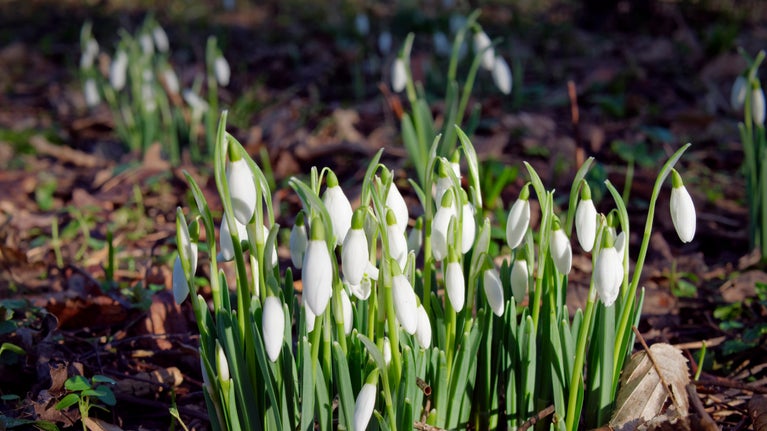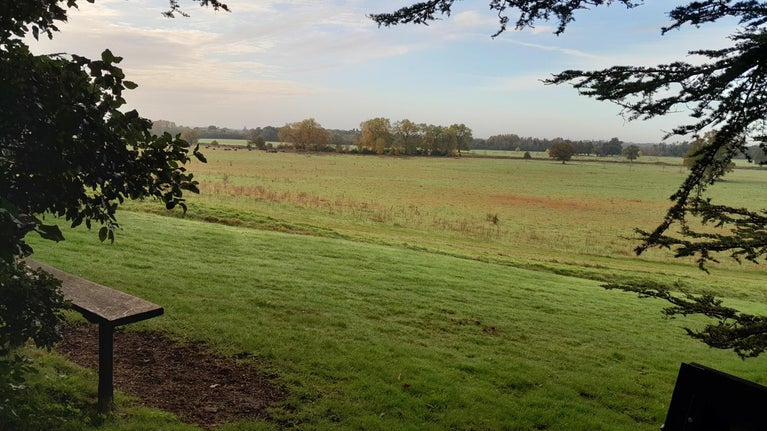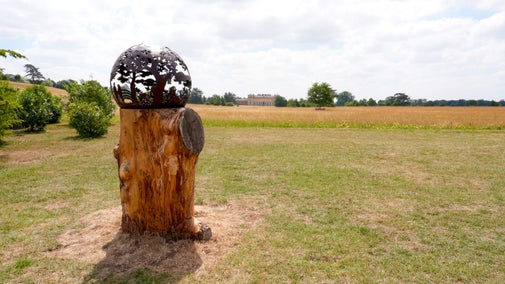
Discover more at Croome
Find out when Croome is open, how to get here, things to see and do and more.

With commanding views over the Malvern Hills, the ‘Capability’ Brown landscape was designed to impress. Rescued from almost total loss, today Croome’s parkland with its serpentine river, tree lined lake, and elegant garden buildings is a perfect place to get outdoors and enjoy spending time in nature.
From specialist nature events, history walks, health walks, and park building open days, there's lots to get involved with at Croome in 2025. Follow the link below to see all of Croome's events and reserve your place today.
Running until 1 March 2026
As part of Pages from Nature, we invite you to pick up a ‘Walk through the Pleasure Grounds’ guidebook inspired by the Hortus Croomensis with activities to help you experience not only the sights, but also scents, sounds and feelings of the Georgian parkland. Find out the history behind the landscape design; take time to sketch in the booklet, pause along the way to smell scents in the special scent boxes – can you guess what they are? Read quotes from the 1824 text to feel transported back 200 years.
£3 per guidebook (normal admission applies)
Even during the colder months, there’s lots of colour and structure to be enjoyed in Croome’s parkland. There’s a wonderful show of snowdrops in the Church Shrubbery in the first few months of the year and you can see Galanthus nivalis which were mentioned in the 1824 guidebook, the Hortus Croomensis. Crocuses are an early flowering bulb and over a thousand were planted in the Wilderness Walk; they give a colourful display with their bright golden petals.

Year-round structure in the parkland comes in the form of yew (Taxus baccata), Holm aak (Quercus ilex), Portuguese laurel (Prunus Lusitanica), holly (Ilex aquifolium) and box (Buxus sempervirens), all of which are evergreen trees with glossy green leaves in various shades. Yew, Box and conifers in particular respond really well to being clipped and so are ideal for forming topiary shapes. The evergreens can also provide shelter for other plants from the strong winter winds and even frosts.
Scented plants such as Winter Daphne (Daphne odera), which has a wonderful fragrance, as well as pretty pale pink flowers, is grown in the Evergreen Shrubbery, an area designed by ‘Capability’ Brown in the 18th century for the 6th Earl of Coventry to specifically give winter interest.
Witch hazel (Hamamelis) can also be seen which has bright yellow, fragrant, spidery flowers on its bare branches in mid to late winter. In the 18th century there were over 150 different heathers grown in special beds in the Flower Garden.
Honeysuckle (Lonicera fragrantissima) is another scented favourite at Croome, with a beautiful fragrance as its name suggests. This is a shrubby honeysuckle, not a climber, and it flowers in winter with dainty creamy white flowers on arching stems.
Often thought of as a quiet time for wildlife as creatures hibernate or migrate, there's still plenty of wildlife to spot this winter at Croome, if you know where to look. Croome is a haven for wildlife during the winter months and a visit to the bird hide or walk around the parkland gives you a chance to spot many of the wildlife residents.
The bird-hide, secreted in a quiet spot in the Church Shrubbery, is a great way for families to spend a while watching the birds flocking onto the feeding stations. Winter can be a particularly difficult period for birds so a feast of mixed seeds, peanuts and niger seeds are always greeted with a flurry of feathers. During the winter months we also gve them an extra special treat of cardoon seed heads from the garden.

From the hide visitors are regularly greeted with colourful woodpeckers, pheasants, nuthatches and treecreepers, as well as different types of finch and tits.
As you wander through the parkland you might just come across a scampering squirrel or see signs of rabbits - even if they are hiding away in the warmth of their burrows on these chilly winter days. The elusive deer sometimes creep out from the hedgerows to venture into the parkland.
A walk through the acres of parkland reveals larger birds like kestrel, buzzard, cormorant and heron, as well as winter migrants such as fieldfares and redwings – look out for the flash of a kingfisher, often glimpsed near the Island Pavilion Bridge.
Enjoy a few moments sitting in the Grotto near the island at the lakeside. An ideal spot to watch the many wildfowl with swans, Canada geese, ducks, moorhens and coots.
The Grade I listed Panorama Tower was designed by James Wyatt in 1801, based on an earlier design by Robert Adam for a similar building in the 1760s. The building is made of Bath stone and was modelled on Tempietto Romano in Rome, which was designed by Donato Bramante.

The Park Seat was designed by Robert Adam in 1766 and has been known locally as The Owl's Nest, as it used to be a home to a barn owl. The Grade II listed building, which overlooks the parkland and has fantastic views to the court along the river, was restored in 2007.
Pirton Castle was designed by James Wyatt in 1801. Located on a ridge called Rabbit Bank, Pirton Castle was designed to be viewed from the park at Croome and was deliberately built as a ruin to make the 6th Earl of Coventry's estate seem much older than it actually was.
Grade II* listed Dunstall Castle was designed by Robert Adam in 1766. Adam deliberately designed it as a whimsical folly with elements of both a castle and a church.
When Lancelot ‘Capability’ Brown was commissioned in 1751 to redesign both the house and the garden, the Chinese Bridge was one of the few features that he kept. Originally designed by William Halfpenny in the 1740s for the 5th Earl of Coventry, the bridge spanned the river close to Croome Court and linked the house to the wider parkland.

Discover Croome's Silent Space which is part of the Silent Space | Peaceful time in green places
Our Silent Space is located not far from the Rotunda in the Home Shrubbery, the 6th Earl of Coventry’s favourite place in the garden at Croome. Take a seat on one of the benches – listen to nature, breathe in the fresh air and enjoy the views over the parkland. You might spot swans on the river or hear buzzards as they soar overhead. Enjoy a moment of rest and tranquillity before exploring more of the garden and park at Croome.


Find out when Croome is open, how to get here, things to see and do and more.
Croome’s creative programme is committed to socially engaged practice. We work with artists and communities to bring to life the stories of our past for audiences of today.

Croome is a two pawprint rated place. Find out everything that you need to know about walking your dog at Croome, including the canine code and where to find doggy facilities.

Croome was 'Capability' Brown's first commission. Not only did he re-design the whole landscape but also remodelled Croome Court.

Take a look at some of the conservation and restoration projects that have taken place in the estate at Croome.

Enjoy this scenic 2.5-mile circular walk around the 'Capability' Brown-designed landscape in the parkland at Croome.

Explore Croome's parkland with the whole family on this buggy and wheelchair friendly walk, taking in the main highlights of the estate.
